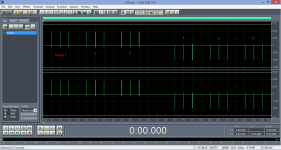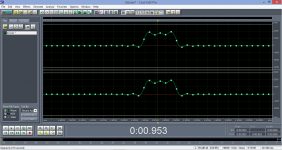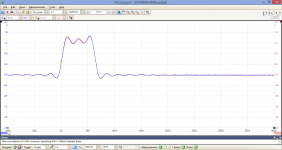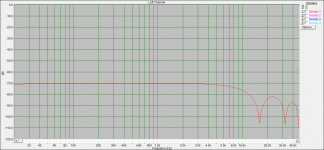It seems to me that the music business is not much interested by the 3D spacialisation. Apart for film music mixing.Tourney
I am sure virtually all mixing consoles have a left - right pan control on the stereo buss. Ever have knob that was marked up - down on any piece of gear?
In France, The IRCAM (Radio France ), STMS and the CNRS as well as the is University Paris Descarte are studying the subject since decades.
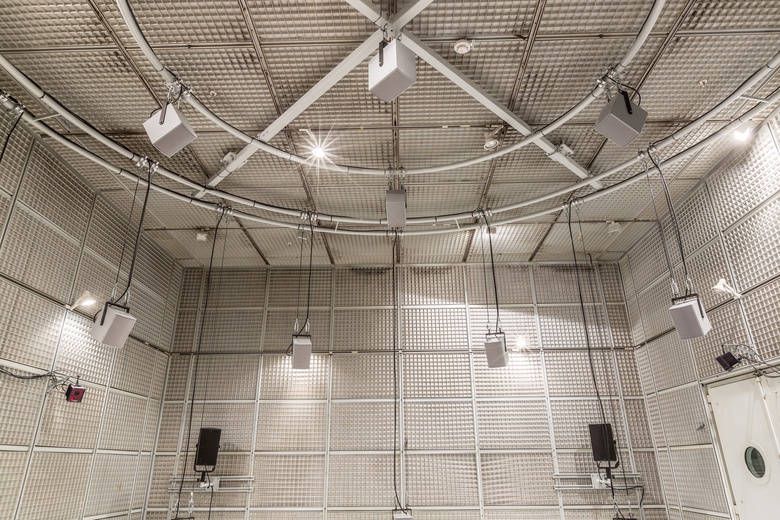
The first result of their researches were using complex algorithms, playing with response curves differences and delais on a stereo system (2 Speakers) SPAT. I don't remember the name of the Japanese company that produced a gear for studios: not a big commercial success ;-). I had never seen any gear from them in production studios.
It was based on vertical positioning as well as front and rear. Mainly based on headphones listening for their desmonstrations.
It is more the movie business that imposed 3D with the 5+1, and the researches are more oriented on this system. But I know only 2 modern plugin for mixing desks that works all in one for 3D specialisation in 5+1 : Panoramix and SPAT revolution. Very confidential ;-)
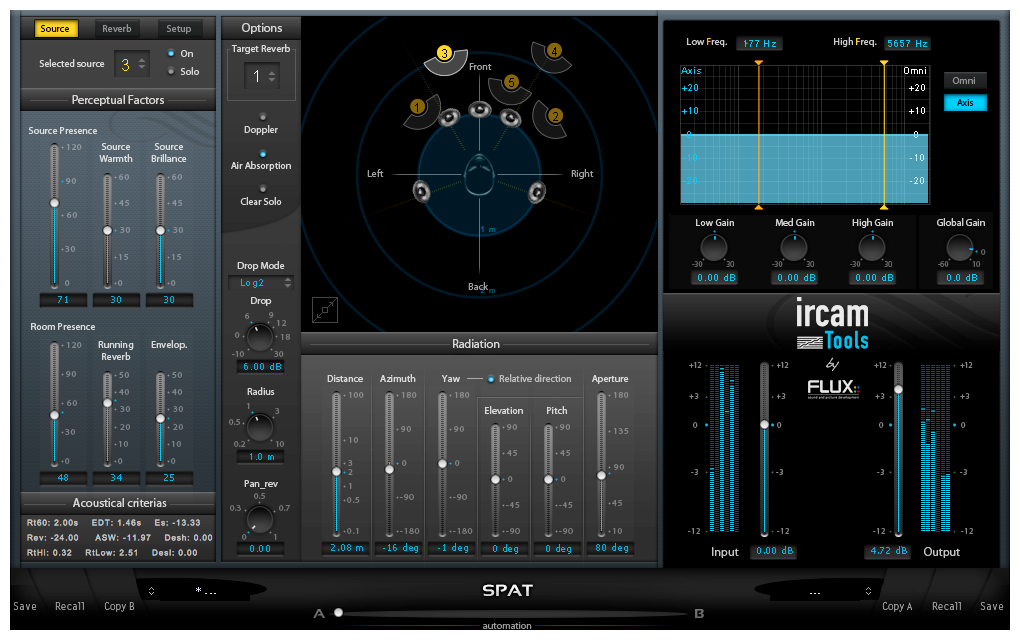
Note the "Elevation" knob.
For the moment, all this is still experimental and stammering. Interesting more the experimental music composers than the industry. A strategic error of the IRCAM since decades, on my point of view.
I never seen any up/down knob on any mixing desk in a pro studio, on my side. And it seems most people in music industry is interested only to a spacialisation on an horizontal plane. This can be explained by the fact that most of the time, in concerts halls, the musicians are not situated in the sky, but in front of the audience ? ;-)
Questions de spatialisation
Spatialisation sonore | IRCAM
Spatialiser le son a Radio France : pour quoi faire ? – Hyperradio
Logiciels de spatialisation : Panoramix & Spat Revolution a l’Ircam - Les Editions AS
etc...
Notice too that the fact that , in movie industry, the number of tracks coming from the editors to the mix engineer increase years after years, wile the time reserved for the mix is decreasing as well does not help to spend too much time on this aspect.
It becomes more of a secretarial work than artistic creation.
Chris Hornbeck, you will still smile from my English, I'm sure ;-)
.
Last edited:
Analog desks no, digital desks yes but it's a balance control of the master.I am sure virtually all mixing consoles have a left - right pan control on the stereo buss.
Yeah, lots.Ever have a knob that was marked up - down on any piece of gear?
Attachments
Last edited:
Straight up the first half of the file sounds sort of like the real thing (the starts of the sounds are not immediate), and the second half of the file the sounds are inverted and 'all wrong'/not possible for a pulse sound.
I then read your post #21108 and can report that I did not note L/R change or other changes but I did loudly notice the timbre like change characteristic of polarity inversion.
Dan is correct, groups of impulses #4 - 6 are a direct inversion of groups #1 - 3. However there are still differences inside the groups #1 - 3 and #4 - 6 (which cannot be seen from the image posted) and that's in fact the main reason why I posted the test file. This means, group #1 is not identical to group #2, group #2 is not identical to group #3 and #3 is not identical to #1. Same for #4 - #6.
Attachments
Last edited:
No he wasn't , his knowledge of statistics was limited. The usual solution is to give him Rice's paper and tell him to read all of it. Rice, S. O., Mathematical Analysis of Random Noise. Bell System Technical Journal 24
Obviously noise per se doesn't have a statistical distribution of average.
However, couldn't be argued that, for example, the statistical distribution of beta creates a statistical distribution of the average input current noise?
As well me on my PC speakers. and verticaly situated a little above the line between my speakers.On my chomebook and headphones I hear centralised clicks
About verticality, I believe that this could be very "Cultural". It is psycho acoustic. We can imagine that animals having to fight against predators situated at height develop a better capacity of localization in the vertical plane ?
Or that the fact that one or the other of us interested in the depth or verticality of the spacialisation is more prone to create virtual images in 3D ?
By example, listening to a drums recording, lot of people has the feeling that cymbals are up while kick drums are down. But is-it because they recreate in their mind a visual image of a real drum kit ? I believe this more than a effect of the distribution of the speakers in the vertical plane in many speaker's enclosures. it works as well on concentric, large band or D'Appolito speakers.
Last edited:
I'm glad I spotted a difference 🙂, I'm not totally deaf then 😉 Would that explain my impression of groups 4-6 being "out of focus"?Dan is correct, groups of impulses #4 - 6 are a direct inversion of groups #1 - 3. .
Yes, maybe yes. I also do hear some difference, with good headphones and soundcard. On a tablet + headphones, it starts to be worse defined. It might be quite complex - DAC, headphones/speakers, ears. More observers would be appreciated.
All that you say sounds reasonable, are you feeling OK? 😉🙂 I wonder if expanding the image, creating spaciousness, our minds interpret like inflating a balloon, it expands in all directions?As well me on my PC speakers. and verticaly situated a little above the line between my speakers.
About verticality, I believe that this could be very "Cultural". It is psycho acoustic. We can imagine that animals having to fight against predators situated at height develop a better capacity of localization in the vertical plane ?
Or that the fact that one or the other of us interested in the depth or verticality of the spacialisation is more prone to create virtual images in 3D ?
By example, listening to a drums recording, lot of people has the feeling that cymbals are up while kick drums are down. But is-it because they recreate in their mind a visual image of a real drum kit ? I believe this more than a effect of the distribution of the speakers in the vertical plane in many speaker's enclosures. it works as well on concentric, large band or D'Appolito speakers.
No he wasn't , his knowledge of statistics was limited. The usual solution is to give him Rice's paper and tell him to read all of it. Rice, S. O., Mathematical Analysis of Random Noise. Bell System Technical Journal 24
Yes. I stopped on the second page . . . . 😀
Yes. I stopped on the second page . . . . 😀
Only 108 pages left
https://ia902704.us.archive.org/7/items/bstj24-1-46/bstj24-1-46.pdf
George
Are you sure "3 impulses in one group are all same.".....the first set of three sounds different ABA maybe, third group has different order like BAB or something.Thank you for trying, do you hear any left/right move or timbre change between the groups of impulses? There are 6 groups of 3 impulses in each, spaced of 1s between impulses. 3 impulses in one group are all same. The question is if groups of 3 impulses audibly differ. Time interval between groups of 3 impulses is 2s. So, 3 same impulses with 1s spacing, then 2s silence and further group of 3 impulses. There is a longer 4s silence interval between first 3 groups (group 1 - 3) and second 3 groups (group 4 - 6) of impulses.
These are faint differences on headphones, I will try speakers tomorrow.
Are you sure "3 impulses in one group are all same.".....the first set of three sounds different ABA maybe, third group has different order like BAB or something.
Well yes, pretty much same. Groups are copies of the 1st one, with interchannel time shifts added. However, dac filter response or headphone response or ear response under repetition may make a difference.
The file is in 96kHz, sample interval is 10.416us. Sets differ in time shift between L/R channels. This may reflect as timbre change for you. I have read peaks in 3 of impulses, two from #1 and one from #3. Their sample levels are
18426, 17293, 19125
18425, 17293, 19124
.
18429, 17292, 19130
This is not enough difference to speculate about. This test should say something about time shift audibility, not about sample level.
Attached are data samples form group #1 and also measured impulses 1 from group #1 (DAC out). Also an impulse spectrum.
I am not disclosing time shift values at the moment. Just that the groups #1 and #4 are time coincident.
Attachments
Difficult to get a blind test though. People may have peeked...
The inversion was hard not to notice!
The inversion was hard not to notice!
Blind test would mean to make at least 2 files and compare in ABX. I can prepare it later to a special thread. This is rather for anyone interested to try. Also anyone with e.g. Audacity and some small skills can see what is in the file.
I was searching the internet to find a minimum detectable ITD for impulse signals, but did not have much success. That's why I asked @Jakob2.
I used some ITD here, which I am not disclosing yet. I also tried to find my reliable threshold. Not in this test file here.
BTW, it would be of highest value to measure acoustical output from the speaker or headphones, to speculate what we hear. I know that neither speaker nor headphones will be able to transfer the same shape of such impulses if they are repeated. In case of speakers, the situation is even more complicated by room reflections. The 1st impulse from the speaker will look very different than the following ones.
I was searching the internet to find a minimum detectable ITD for impulse signals, but did not have much success. That's why I asked @Jakob2.
I used some ITD here, which I am not disclosing yet. I also tried to find my reliable threshold. Not in this test file here.
BTW, it would be of highest value to measure acoustical output from the speaker or headphones, to speculate what we hear. I know that neither speaker nor headphones will be able to transfer the same shape of such impulses if they are repeated. In case of speakers, the situation is even more complicated by room reflections. The 1st impulse from the speaker will look very different than the following ones.
It seems to me that the music business is not much interested by the 3D spacialisation. Apart for film music mixing.
In France, The IRCAM (Radio France ), STMS and the CNRS as well as the is University Paris Descarte are studying the subject since decades.

The first result of their researches were using complex algorithms, playing with response curves differences and delais on a stereo system (2 Speakers) SPAT. I don't remember the name of the Japanese company that produced a gear for studios: not a big commercial success ;-). I had never seen any gear from them in production studios.
It was based on vertical positioning as well as front and rear. Mainly based on headphones listening for their desmonstrations.
It is more the movie business that imposed 3D with the 5+1, and the researches are more oriented on this system. But I know only 2 modern plugin for mixing desks that works all in one for 3D specialisation in 5+1 : Panoramix and SPAT revolution. Very confidential ;-)

Note the "Elevation" knob.
For the moment, all this is still experimental and stammering. Interesting more the experimental music composers than the industry. A strategic error of the IRCAM since decades, on my point of view.
I never seen any up/down knob on any mixing desk in a pro studio, on my side. And it seems most people in music industry is interested only to a spacialisation on an horizontal plane. This can be explained by the fact that most of the time, in concerts halls, the musicians are not situated in the sky, but in front of the audience ? ;-)
Questions de spatialisation
Spatialisation sonore | IRCAM
Spatialiser le son a Radio France : pour quoi faire ? – Hyperradio
Logiciels de spatialisation : Panoramix & Spat Revolution a l’Ircam - Les Editions AS
etc...
Notice too that the fact that , in movie industry, the number of tracks coming from the editors to the mix engineer increase years after years, wile the time reserved for the mix is decreasing as well does not help to spend too much time on this aspect.
It becomes more of a secretarial work than artistic creation.
Chris Hornbeck, you will still smile from my English, I'm sure ;-)
.
Ever hear of Dolby Atmos? Netflix now wants all there shows to be mixed in this format, which means most producers will also insist on it. So this is the new standard for video audio while most music is still in the 60 year old stereo format. Why? And even tho the musicians are front and centre the sound comes from all around you.
Last edited:
For music, the demand isn't there. Stereo is simple, cheap, does the job remarkably well considering it's limitations, you can wear earbuds, doesn't sound too bad in mono....... If you want you can manipulate stereo in your room to make the sound come from all around in a convincing manner.So this is the new standard for video audio while most music is still in the 60 year old stereo format. Why? And even tho the musicians are front and centre the sound comes from all around you.
most music is still in the 60 year old stereo format. Why?
One reason might be because good stereo dacs, amps and speakers are expensive enough as is. For some people it might be the difference between a pretty decent stereo, or a big box store junk surround system.
Good DACs and amps are not expensive compared to speakers. There are many good DACs built in disc players costing around $99. You don't believe me? Do a level matched double blind listening against your best one and see what you get.One reason might be because good stereo dacs, amps and speakers are expensive enough as is. For some people it might be the difference between a pretty decent stereo, or a big box store junk surround system.
Do a level matched double blind listening against your best one and see what you get.
Nothing, or better say zero result. That's why the audiophiles hate DBT tests and permanently find excuses about the method or software like Foobar ABX. The unsuccessful result would be blamed on everything but hearing limits or psychoacoustics.
- Status
- Not open for further replies.
- Home
- Member Areas
- The Lounge
- John Curl's Blowtorch preamplifier part III

